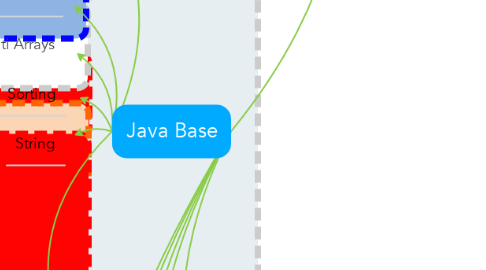
1. What do you need to start codding
1.1. Text editor
1.2. Compiler
1.3. Interpreter
1.4. Literature
1.5. IDE
1.5.1. Integrated development environment
1.5.1.1. IntelliJ IDEA
1.5.1.2. Eclipse
1.5.1.3. NetBeans IDE
2. Sorting
3. String
4. Multi Arrays
5. Recursion
6. Formatter
6.1. Format specifiers
6.1.1. %c
6.1.2. %d
6.1.3. %f
6.1.4. %%
6.2. Width & precision
6.2.1. %10.5f
6.3. Flags
6.3.1. - (left)
6.3.2. #
6.3.3. 0 (spaces fill with 0)
6.3.4. + (spaces fill with +)
6.3.5. ,
6.3.6. ( negative in branch
6.4. General view
6.4.1. %[arg_idx$][flags][width][.precision]conversion
7. Data types & operations with them
7.1. Data types
7.1.1. Primitive data types
7.1.1.1. Primitive data types
7.1.1.1.1. Integer
7.1.1.1.2. Floating-point
7.1.1.1.3. Other
7.1.2. Reference data types
7.2. Data type casting
7.2.1. Пара слов о числах с плавающей точкой в Java
7.2.2. Что нужно знать про арифметику с плавающей запятой
7.2.3. Untitled
7.3. Data type operations
7.3.1. Data type operations
7.3.1.1. Unary operations
7.3.1.1.1. is an operation with only one operand
7.3.1.2. Binary operations
7.3.1.2.1. is a calculation that combines two elements of the set (called operands) to produce another element of the set
7.3.1.2.2. Shorthand operators
7.3.1.3. Relational operations
7.3.1.3.1. these operators usually evaluate to true or false, depending on whether the conditional relationship between the two operands holds or not
7.3.1.4. Logical connective
7.3.1.4.1. operation on logical expressions (Boolean) type
7.4. Data type fighting
7.4.1. 1) anyone + double = double;
7.4.2. 2) anyone + float = float;
7.4.3. 3) anyone + long = long;
7.4.4. 4) anyone + int = int;
8. Introduction to reference types
8.1. String
8.1.1. Function
8.1.2. Creation
8.1.3. Methods
8.2. Scanner
8.2.1. Function
8.2.2. Creation
8.2.3. Methods
8.3. Class Math
8.3.1. Function
8.3.2. Creation
8.3.2.1. Static! Don't need to create instance!
8.3.3. Methods
9. Conditional statements
9.1. are features of a programming language, which perform different computations or actions depending on whether a programmer-specified boolean condition evaluates to true or false
9.1.1. If–then(–else)
9.1.1.1. Signature
9.1.1.2. Rules
9.1.1.3. Diagram
9.1.1.3.1. Untitled
9.1.1.4. Else if
9.1.1.4.1. By using else if, it is possible to combine several conditions.
9.1.2. Switch - case
9.1.3. "If" examples
9.1.3.1. Without branches
9.1.3.2. Without "Else"
9.1.4. Tarnary operator
9.1.4.1. if ? then : else
10. Methods
10.1. Function
10.1.1. DRY (Don't repeat yourself)
10.2. Signature
10.2.1. interface for users
10.2.2. Contains
10.2.2.1. return type or void
10.2.2.2. name (verb)
10.2.2.3. arguments
10.3. Location
10.3.1. Static or non-static
10.3.2. The same or another class
11. Arrays
11.1. Function
11.1.1. An array is a systematic arrangement of similar objects, usually in rows and columns.
11.1.2. Can't change size!
11.1.3. Reference type
11.2. Creation
11.2.1. Create & fill with default values
11.2.2. Create & fill with users values
11.3. Access to different cells
12. Loops
12.1. is a sequence of instruction s that is continually repeated until a certain condition is reached.
12.2. Types
12.2.1. While
12.2.2. For
12.2.3. do-while
12.2.4. for each
12.3. Branching Statements
12.3.1. Break
12.3.1.1. Break with label
12.3.2. Continue
12.3.2.1. skips the current iteration of a for, while , or do-while loop.
12.3.2.2. Continue with label
12.3.3. Return
12.3.3.1. exits from the current method, and control flow returns to where the method was invoked.

